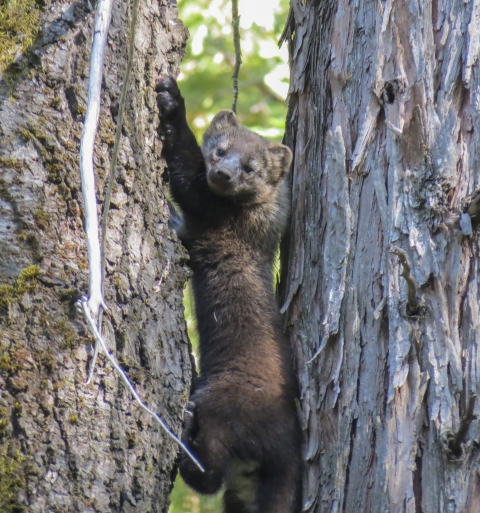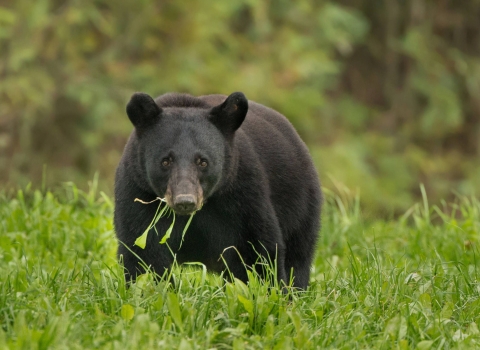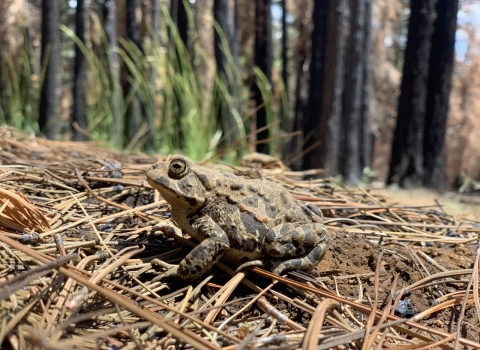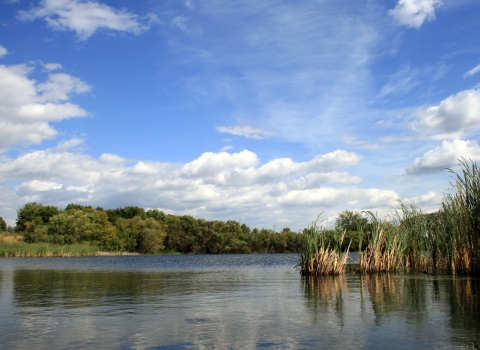The U.S. Fish and Wildlife Service today released a revised version of the 2021 critical habitat proposal for the southern Sierra Nevada distinct population segment (DPS) of fisher. The revision proposes to designate approximately 595,495 acres of critical habitat in portions of Fresno, Kern, Madera, Mariposa, Tulare and Tuolumne counties in California, an increase of 41,041 acres from the initial proposal. The revision identifies areas essential to the conservation of the species, which is currently listed as endangered under the Endangered Species Act.
The Service revised the initial critical habitat proposal due to the availability of new scientific information on fisher habitat. Through the public comment process on the initial proposal, the Service was made aware of high-quality habitat for the southern Sierra Nevada DPS of fisher that was not included in the initial proposal. Additionally, a new scientific model that improves identification of lands that fisher use for reproduction and denning was released after the Service published the proposed rule. The Service determined that this new model and the site-specific habitat areas constitute the best available information to use in designating critical habitat for the species, and therefore has revised the initial proposal. The Service is providing the public with an opportunity to review and comment on the revised proposal.
“The public comment process is an important step in developing critical habitat,” said Michael Fris, field supervisor for the Sacramento Fish and Wildlife Office. “In this case, we received valuable new science that helped us identify areas that are essential to the species’ conservation.”
Fishers are medium-sized mammals classified in the same family as weasels, mink, martens and otters. The southern Sierra Nevada DPS of fisher is estimated to consist of 100 to 500 individuals. Habitat loss and fragmentation resulting from catastrophic wildfire is one of the biggest threats to the species. Tree mortality and prolonged drought are also a concern as females use tree cavities for denning.
More than 90 percent of the revised proposed critical habitat falls on federal lands managed by the U.S. Forest Service (USFS), National Park Service (NPS) and Bureau of Land Management. During the public comment period, the USFS, NPS and a species expert from a research institute recommended additional areas for inclusion as critical habitat, mostly consisting of public lands. After reviewing the information, the Service agreed that those areas serve as important reproductive habitat for the fisher. The revised proposal is not expected to restrict recreational access on public lands.
The establishment of critical habitat will not prevent essential activities that reduce the risk of catastrophic wildfire and protect local communities, such as reducing forest fuels or maintaining fire breaks. Catastrophic, high-severity wildfire is a major threat to many species, including the fisher. The Service supports responsible land management activities that contribute to healthy forest ecosystems and reduce the risk of catastrophic wildfire. Through collaboration with federal, state and local government agencies, as well as private partners, these activities can continue while maintaining habitat components that the species requires for successful reproduction and foraging.
The revised proposed critical habitat rule will publish in the Federal Register on November 7, 2022, opening a 45-day public comment period. The Service will consider comments from all interested parties received by December 22, 2022. Comments previously submitted for the proposed rule do not need to be resubmitted. They will be fully considered in preparation of the final rule. The revised proposal, legal boundaries, GIS shapefiles and information on how to submit comments will be available on www.regulations.gov by searching under docket number FWS-R8-ES-2021-0060.
The U.S. Fish and Wildlife Service works with others to conserve, protect and enhance fish, wildlife, plants and their habitats for the continuing benefit of the American people. For more information about our work and the people who make it happen, visit www.fws.gov/Sacramento. Connect with us via Facebook, Twitter, YouTube and Flickr.




